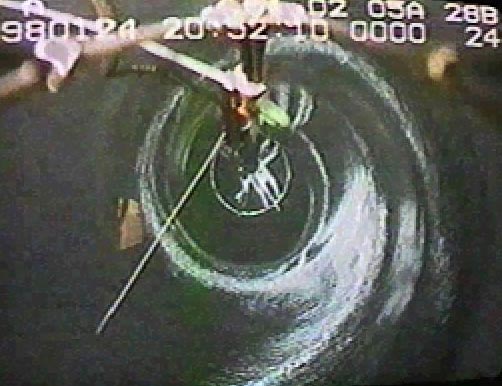
|
Credit & Copyright: The AMANDA Collaboration
Explanation:
In 1996, scientists melted a hole in the bottom of the world.
In fact, several holes have been melted near the
South Pole, and they are now being
used as astronomical observatories.
Astronomers with the
Antarctic Muon and Neutrino Detector Array (AMANDA)
lower into each vertical lake a string knotted with basketball-sized light detectors.
The water in each hole soon refroze.
The detectors are sensitive to blue light emitted
in the surrounding clear ice. Such light is expected
from ice collisions with high-energy
neutrinos emitted by
objects or explosions out in the universe. The
above picture was taken 750 meters below the surface
looking down into the
abyss.
Instruments were lowered down past 2000 meters.
Data from AMANDA is already being
collected and analyzed.
|
January February March April May June July August September October November December |
| ||||||||||||||||||||||||||||||||||||||||||||||||
NASA Web Site Statements, Warnings, and Disclaimers
NASA Official: Jay Norris. Specific rights apply.
A service of: LHEA at NASA / GSFC
& Michigan Tech. U.
Based on Astronomy Picture
Of the Day
Publications with keywords: ice - Antarctica - neutrino
Publications with words: ice - Antarctica - neutrino
See also:
